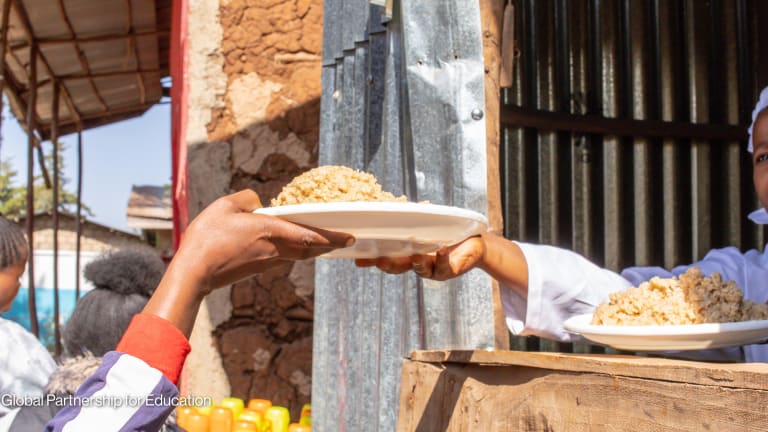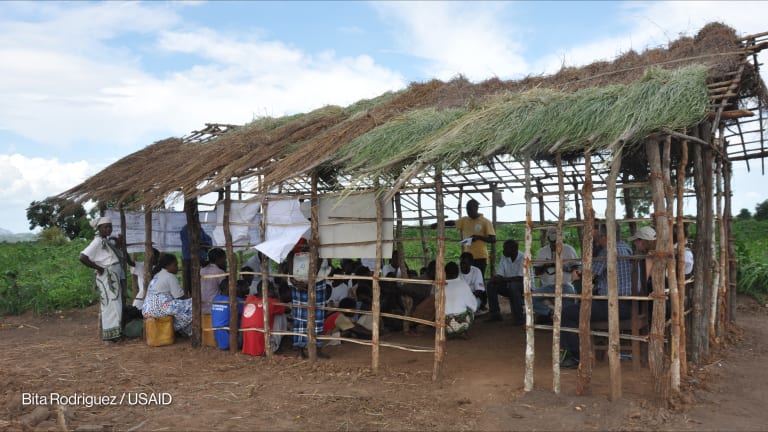
To end the crisis in the Sahel, most decision-makers agree that policies and practices representing “business as usual” must change. However, that requires major changes to the broader development model itself.
Nearly 5 million more people have joined the ranks of the food insecure in the Sahel since the beginning of 2014, bringing the estimated total to 24.7 million. It is estimated that more than $1.96 billion is needed to address the chronic humanitarian crisis in the region in 2015, up from $1.6 billion in 2012. Yet resilience cannot be achieved through humanitarian funding alone.
Creating resilience requires shifting longer-term development strategies and funding priorities to address deepening inequities in access to adequate food, basic goods and essential public services in marginalized rural areas. It also means overcoming the barriers preventing the poorest and the most vulnerable groups from improving their livelihoods and resilience.
One essential strategy to achieve this change is by reallocating public resources and investments in agriculture. There is widespread agreement that increased support for small-scale agriculture holds the key to rural poverty reduction and improving food and nutrition security. The reality is that little public spending on agriculture reaches vulnerable farm households, and even less reaches women farmers.
It is estimated that at least 20 percent of the Sahel population live on less than 50 cents per day. Many of these people have been forced to adopt negative coping mechanisms. These include: exploitative loans repaid from the following year's harvest; consumption of seeds that should be saved for the next planting season; and reduction in the number of daily meals from three to two or even one, leading to severe malnutrition, especially in children. In reality, most vulnerable people in the Sahel face a growing “resilience deficit,” with such strategies forcing them to live at the edge of survival.
This resilience deficit in the Sahel results from deep flaws in the dominant development model. On the surface, Sahelian countries seem successful, having achieved consistently robust economic growth, including in agricultural production. Since 2005, real gross development product growth rates for Burkina Faso, Mali, Senegal and Niger (including projections for 2015), averaged 6.4 percent, 4.5 percent, 3.9 percent and 5.7 percent, respectively. However, the African Development Bank notes that “the benefits of the high growth rates achieved over the last few years have not reached the rural poor,” and that chronic vulnerability, hunger and malnutrition have actually increased.
In order to address this resilience deficit and contribute to needed changes in the development model, Groundswell International, in collaboration with ETC International, Sahel Eco, Association Nourrir Sans Detruire and Agrecol Afrique, will focus on an innovative approach to scaling resilient rural livelihoods in the ecologically fragile drylands of the Sahel. This program is being developed with the support of the Global Resilience Partnership, through the Global Resilience Challenge, an initiative spearheaded by the Rockefeller Foundation, U.S. Agency for International Development and Swedish International Development Cooperation Agency.
Our innovative approach to achieve these goals is called “AE+6” (Agro-ecology plus Six). Fundamental to an effective strategy for dryland farmers is the promotion of an alternative, multifunctional approach to agriculture that will contribute to stable, sustainable, climate resilient food production and livelihoods. This alternative approach to farming, called agro-ecology, includes methods such as farmer-managed natural regeneration of trees, improved soil and water management, and diversification of farming systems.
Despite its proven effectiveness and recognized potential as a scalable alternative for the Sahel, smallholder farmers have not yet adopted agro-ecology at a significant scale. The most significant reason is the prioritization of high-input green revolution technologies by many governments and development actors, yet other limiting factors include an underestimation of the costs, socio-cultural factors, natural resource management issues and institutional factors for wider adoption of agro-ecology.
To take agro-ecology to scale, it is critical to assess the specific costs and barriers to adoption in each national context and identify viable solutions with rural communities. Support for effective agro-ecological technologies cannot stand alone and must be developed by local actors in each ecological, socio-cultural, institutional and policy environment.
Given the resilience deficit, agro-ecology in isolation will not achieve a sustainable level of household resilience, especially for women and children. It must be complemented by activities that generate positive synergies.
That is the essence of AE+6. Building upon agro-ecology as a foundation, our team integrates six other innovative components to strengthen rural communities in the dryland areas in the Sahel.
The first three innovations entail “deepening agro-ecology” by testing ways to strengthen impacts related to nutrition, gender and equity. Such impacts do not result automatically from the wider adoption of agro-ecological practices, unless intentional efforts are made to strengthen access, knowledge and practice related to consuming healthy, diverse local foods; strengthen women’s involvement and leadership; and reach the most vulnerable households.
The fourth innovation is to develop cost-effective ways for “horizontal” scaling of agro-ecology across more households and communities, and “vertical” scaling by linking to national-level advocacy for more supportive policies. The final two innovations are to strengthen local government preparedness for shocks, including through more effective planning and preparation with farmers organizations, and to enable women’s access to credit, land and water.
Strengthening and spreading the adoption of agro-ecology requires working closely with rural communities to adopt key agro-ecological principles in each context. This can be done through enabling farmers to conduct small-scale experimentation in their own fields and fostering extensive farmer-to-farmer learning and exchange.
Such methods will strengthen the “adaptive capacity” for innovation, learning and change that exists in all communities, while also building upon and strengthening the organizational capacity and leadership in rural communities and farmers’ organizations. This in turn strengthens their power and voice, allowing smallholder farmers to demand more effective systems of innovation and adaptation that meet their needs. Combining this foundation of spreading agro-ecological practices with the “plus six” activities will generate positive synergies that can allow rural families in the Sahel to overcome the “resilience deficit.”
This blog post is part of a series highlighting the innovative projects supported by the Global Resilience Partnership, an initiative by The Rockefeller Foundation, U.S. Agency for International Development and Swedish International Development Cooperation Agency designed to help millions in Africa and Asia build more resilient futures.
You can help shape our coverage on global development innovations by emailing news@devex.com or tweeting #innov8aid.








